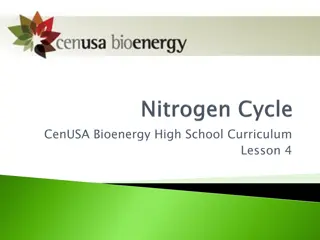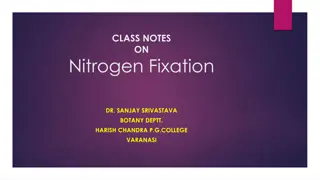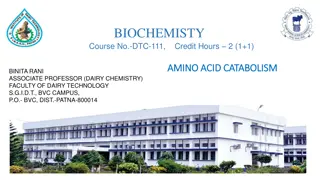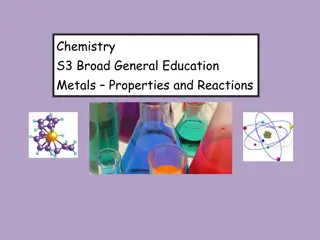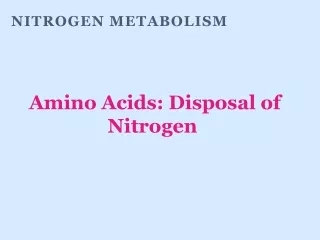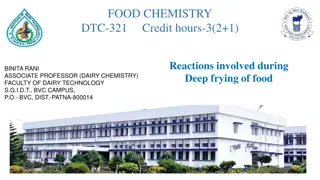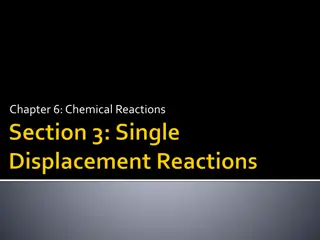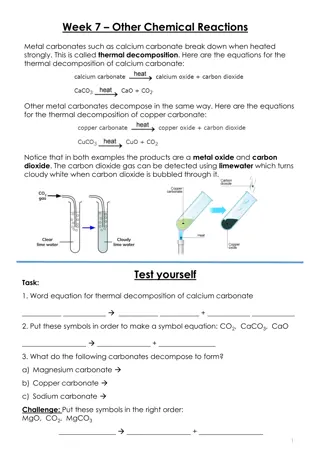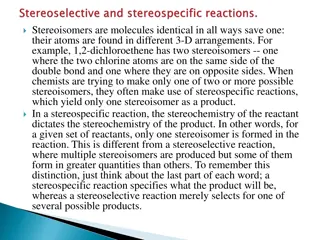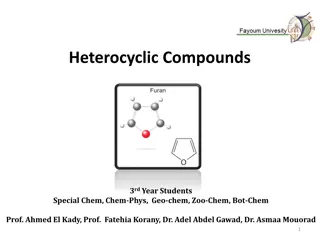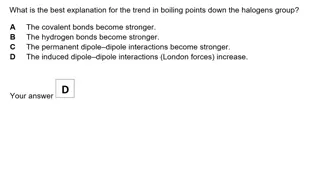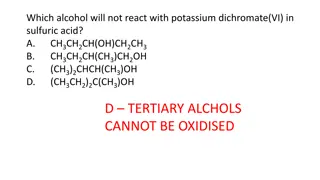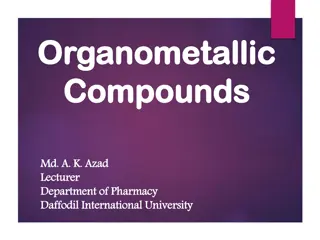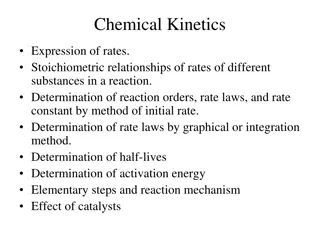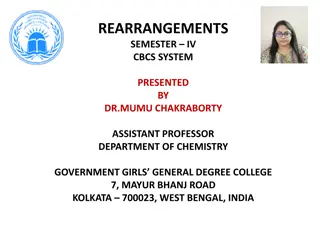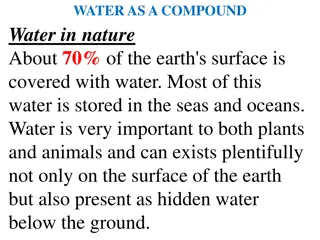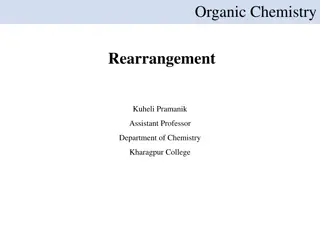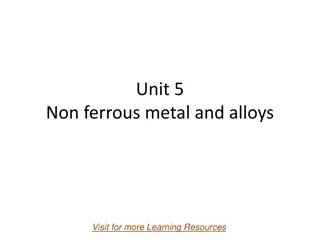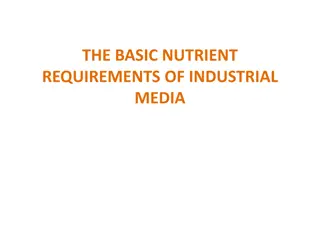Understanding Nitrogen: Properties, Reactions, and Applications
Nitrogen, a colorless and odorless gas, is a vital element present in air and plays a crucial role in various chemical reactions. Known for its unreactive nature due to strong bonds, nitrogen is used in the manufacture of ammonia, fertilizers, and organic compounds. Discover how nitrogen is prepared in laboratories, its reactions with different elements, and applications like in the Haber Process for ammonia production and as nitrous oxide in medical settings.
Download Presentation

Please find below an Image/Link to download the presentation.
The content on the website is provided AS IS for your information and personal use only. It may not be sold, licensed, or shared on other websites without obtaining consent from the author. Download presentation by click this link. If you encounter any issues during the download, it is possible that the publisher has removed the file from their server.
E N D
Presentation Transcript
Liquid nitrogen Group V. Nitrogen and its compounds.
General properties 1st member of group VA Colourless, odourless gas 78% by volume in air Liquid nitrogen as a coolant Most important use is in the manufacture of ammonia and nitrogenous fertilizers Can form a large number of inorganic compounds A major constituent of organic compounds such as amines, amino acids and amides.
Unreactive nature of nitrogen N N Strong N N bond, Bond energy:944 kJ/mol Reactions involving N2have high activation energy and unfavourable equilibrium constant. N2+O2 2NO Kc=4.5x10-31 H=180.5 kJ/mol
Laboratory Preparation of Nitrogen Nitrogen can be prepared from the air as shown below.
Nitrogen can be prepared from the air as shown. Air flows into the respirator and onto caustic soda which dissolves carbon dioxide gas. It is then passed through a heated combustion tube containing heated copper turnings which remove oxygen. Nitrogen is then collected over water. Traces of noble gases present in air still remain in the final product.
Reactions of nitrogen With reactive metals, Li and Mg, to form nitrides. 3Mg(s) + N2(g) Mg3N2(s), an ionic cpd. With oxygen at very high temperature N2(g) + O2(g) 2NO(g) , at very high T 2NO(g) + O2 2NO(g) With hydrogen at special conditions N2(g) + 3H2(g) 2NH3(g) , Haber Process
Nitrous oxide: Nitrous oxide (dinitrogen oxide), N2O, is prepared by gentle heating of ammonium nitrate:
Nitrous oxide is a linear molecule. It has a boiling point of -88 C, and a melting point of -102 C. It is colourless and has a faintly sweet smell. It is used as an anesthetic, popularly called laughing gas laughing gas.
NITRIC OXIDE Nitric oxide, NO, may be prepared by the action of dilute nitric acid on copper:
Laboratory Preparation Ammonia can be prepared by heating an ammonium salt with an alkali . 2NH4Cl (s) + Ca(OH)2(s) 2NH3(g) + CaCl2(aq) + 2H2O (l)
Drying Drying of of Ammonia Ammonia The drying agent used for ammonia is quick lime. Other drying agents such as concentrated sulphuric acid or phosphorus (V) oxide or fused calcium chloride cannot dry an alkaline gas like ammonia. Sulphuric acid and phosphorus (V) oxide are both acidic. They react with ammonia, forming their respective ammonium salt.
http://image.tutorvista.com/content/p-block-elements/ammonia-laboratory-preparation.jpeghttp://image.tutorvista.com/content/p-block-elements/ammonia-laboratory-preparation.jpeg
Ammonia A colourless, pungent gas Easily liquefied (b.p. 33oC) Extremely soluble in water to form a weakly alkaline solution Synthesized by Haber Process Starting material for HNO3and many other important chemicals
The Haber Process In the early 1900 s a German chemist called Fritz Haber came up with his chemical process to make ammonia using the free very unreactive Nitrogen from the air. (N2 is 80% of atmosphere) This is the reaction: Nitrogen + Hydrogen Ammonia N2 (g) + 3H2 (g) 2NH3 (g)
Raw Materials N2 (g) is taken from the air via a process of fractional distillation. H2 (g) comes from natural gas, CH4 (g) CH4 (g) + H2O (g) 3H2 (g) + CO (g) The carbon monoxide then reacts with more steam: CO (g) + H2O (g) H2 (g) + CO2 (g)
Raw Materials cont H2 (g) from methan e N2 (g) from air The Reaction Reaction NH2 (g) Vessel This reaction is exothermic. We increase yield by running the reaction at low temperatures. However at low temperatures the reaction rate is incredibly slow. Compromise between rate and yield has to be reacted. Haber process runs at about 450 c
The Reaction cont The reversible reaction to form ammonia: N2 (g) + 3H2 (g) 2NH2 (g) 4 moles of gas 2 moles of gas 96 litres (4x24) 48 litres (2x24) If pressure is increased in reaction vessel, the reversible reaction favours ammonia production. Increase external pressure favours side with least gas (ammonia). Haber process runs at about 200 atmospheres in order to maximise yield of ammonia.
The Reaction cont Third condition present within the reaction vessel is an Iron catalyst. The catalyst is a fine mesh designed to maximise surface area. Iron is a transition metal, and like many transition metals it makes a good catalyst. N2 from air 450oc NH3 (g) 200 atmospheres H2 from methane and steam Iron catalyst REMEMBER THIS!
After the Reaction Vessel Coming out the reaction vessels is NH3 (g) and unreacted N2 (g) and H2 (g). First job is to isolate the NH3 (g). This is done by cooling. The NH3 (g)changes state. The nitrogen and hydrogen are recycled back into the reaction vessel.
Chemical properties of NH3 Weak alkali Reaction with acids Reaction with metal ions As a reducing agent Burning in oxygen 4NH3+ 3O2 2N2+ 6H2O Catalytic oxidation 4NH3+ 5O2(Pt) 4NO + 6H2O Reaction with CuO 2NH3+3CuO 3Cu+N2+3H2O
Nitric(V) Acid A very strong acid. Turns yellow because of dissolved NO2 formed from the decomposition of HNO3. Kept in amber bottle to avoid exposure to light Commonly used in making explosives, nylon, fertilizers and dyes
Ostwald process Catalytic oxidation of NH3 4NH3+ 5O2(Pt/heat) 4NO + 6H2O Oxidation of NO 2NO + O2 2NO2 Dissolving NO2in water and O2 4NO2+ O2+ 2H2O 4HNO3 Distillation to obtain 68.5% (15M) HNO3as azeotrope
The Ostwald Process The Ostwald process was invented by Wilhelm Ostwald. In the Ostwald process ammonia is oxidised to form Nitric acid. Nitric acid is one of the largest user s of ammonia. The process has 3 stages: Stage 1 Mixture of air & ammonia heated to 230oc and is passed through a metal gauze made of platinum (90%) & Rhodium (10%). Reaction produces a lot of heat energy.. Energy is used to keep reaction vessel temp at 800oc.
Stage 1 cont Reaction produces nitrogen monoxide (NO) and water. Ammonia + oxygen Nitrogen monoxide + water 4NH3 (g) + 5O2 (g) 4NO (g) + 6H2O (g) REMEMBER ALL SYMBOL EQUATIONS! Stage 2 Colourless nitrogen monoxide gas produced from 1ststage is then reacted with oxygen from the air to form brown nitrogen dioxide gas (NO2).
Stage 2 cont Nitrogen monoxide + oxygen Nitrogen dioxide 2NO (g) + O2 (g) 2NO2 (g) Stage 3 The nitrogen dioxide is then dissolved in water to produce nitric acid. Nitrogen dioxide + water Nitric acid + nitrogen monoxide 3NO2 (g) + H2O (l) 2HNO3 (aq) + NO (g)
Oxidizing properties of HNO3 Concentrated HNO3 2NO3-+ 8H++ 6e- 2NO + 4H2O Diluted HNO3 2NO3-+ 4H++ 2e- 2NO2+ 2H2O Reactions with Copper Iron(II) ions Sulphur
Uses of Nitric acid Nitric acid produced is used in the manufacture of the following: Artificial fertilisers Ammonium nitrate. Explosives, such as 2,4,6-TNT. Dyes. Artificial fibres, such as nylon. Used in treatment of metals.
Nitrates(V) Thermal stability K,Na 2MNO3 2MNO2+ O2 Ca to Cu 2M(NO3)2 2MO+4NO2+O2 Hg,Ag Hg(NO3)2 Hg + 2NO2+ O2 NH4NO3 N2O + 2H2O
Brown ring test for NO3- Concentrated H2SO4(l) Fresh FeSO4(aq) and NO3-(aq) NO3-+ H2SO4 HNO3+ HSO4- HNO3+ 3Fe2++ 3H+ 2H2O + NO + 3Fe2+ FeSO4+ NO FeSO4.NO (brown complex)




